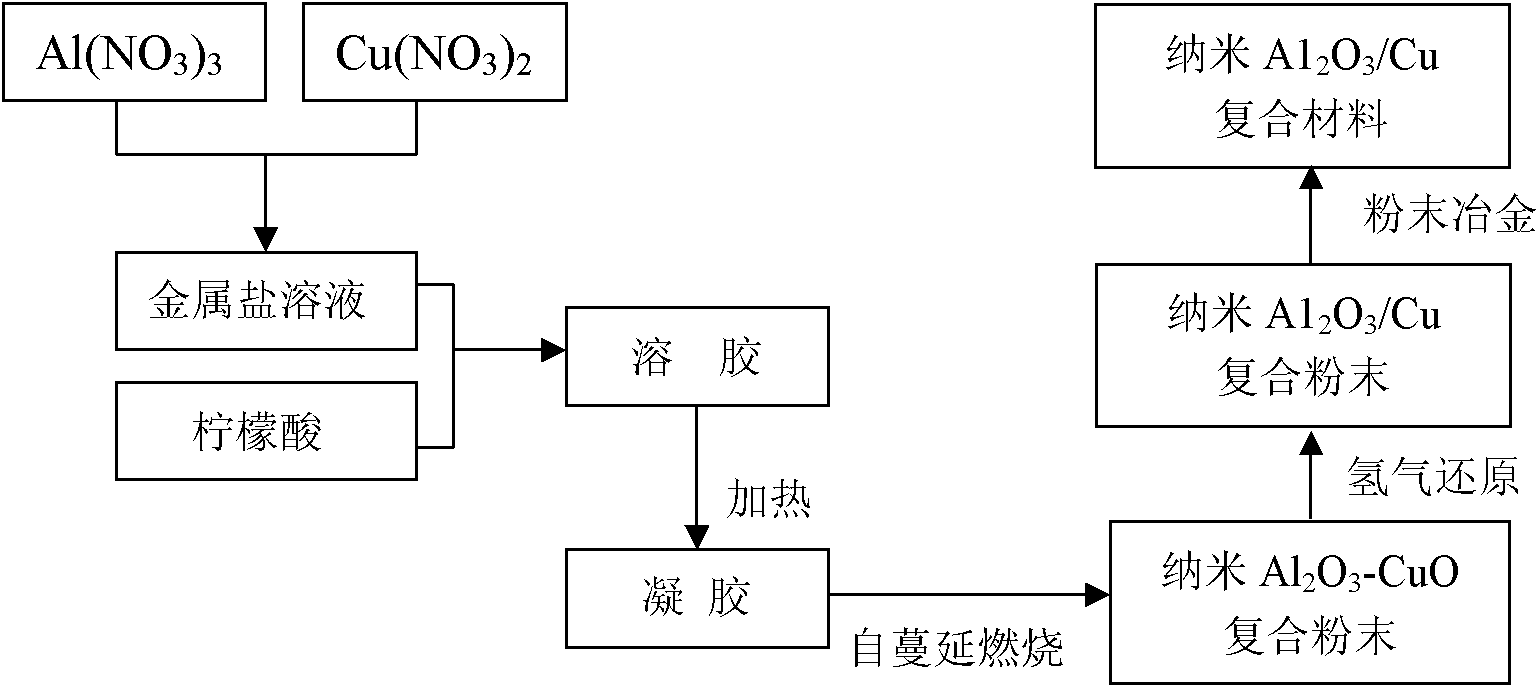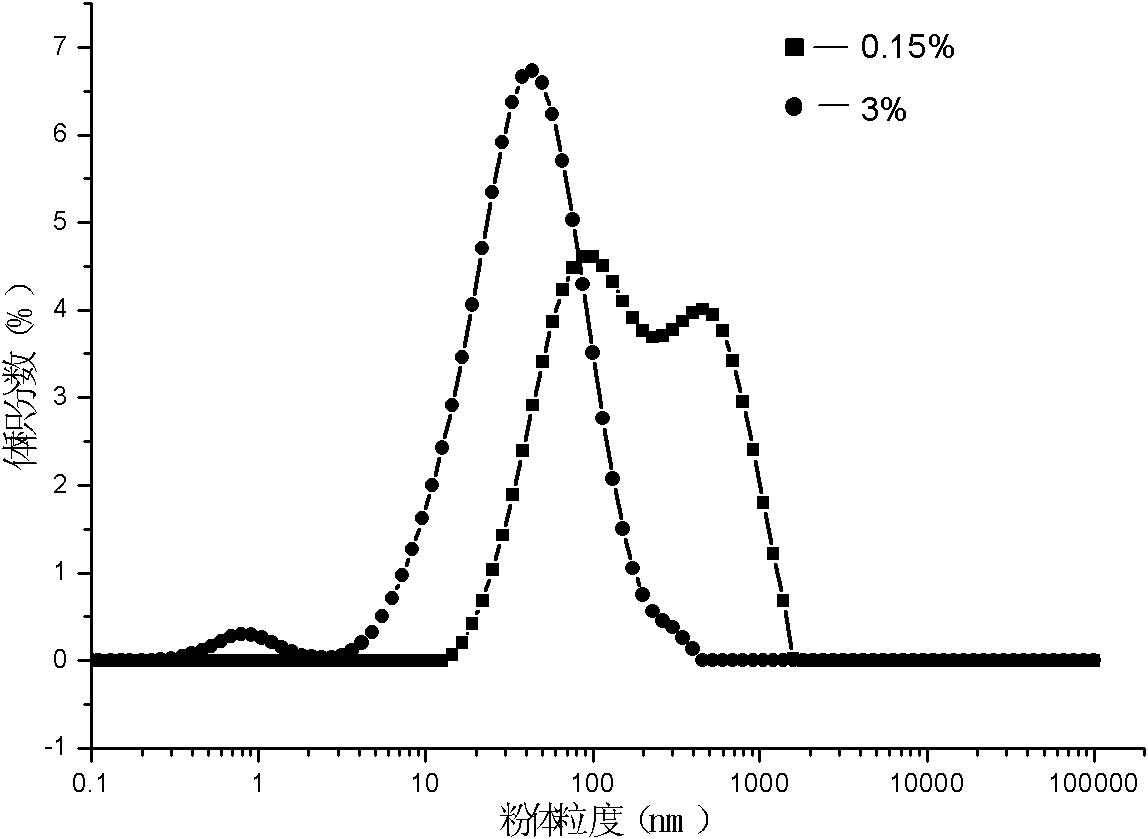Preparation method of nano-alumina reinforcing copper-based composite
A copper-based composite material and nano-alumina technology, applied in the field of copper-based composite material preparation, can solve the problems of uneven reaction, different degrees of segregation, inevitable precipitation of reinforced phase by internal oxidation method, etc.
- Summary
- Abstract
- Description
- Claims
- Application Information
AI Technical Summary
Problems solved by technology
Method used
Image
Examples
Embodiment 1
[0024] Process steps: Weigh 0.1987g, 169.3029g and 134.7452g of aluminum nitrate nonahydrate, copper nitrate trihydrate and citric acid respectively. will contain Al(NO 3 ) 3 and Cu(NO 3 ) 2 The aqueous solution of the solution was mixed evenly, and citric acid (solid) was added, and the stirring was continued, so that the citric acid was completely dissolved, and a mixed solution was obtained. The pH of the mixed solution was adjusted to 1 by nitric acid. Place the mixed solution in a constant temperature furnace at 100°C for 12 hours until it becomes gelatinous. At this time, quickly place the gel on a muffle furnace and heat it to 400°C. The volume of the gel expands violently, and the temperature rises rapidly for 10 minutes. Finally, the container was taken out, and the burning residue was ground to obtain a black powder. The black powder was placed in a hydrogen protective atmosphere and heated and reduced at 350°C for 10 hours. At this time, Al with a volume fracti...
Embodiment 2
[0030] Process steps: Weigh 3.9735g, 164.4705g and 132.8355g of aluminum nitrate nonahydrate, copper nitrate trihydrate and citric acid respectively. According to the operation method of Example 1, successfully prepared Al with a volume content of alumina of 3.0% 2 o 3 / Cu composite powder 99.86cm 3 . The average particle diameter of the obtained composite powder was 52.64 nm.
[0031] The powder was pressed and sintered according to the method described in Example 1, and the hardness of the samples obtained after testing were 105.14HB and 135.98HB respectively before and after sintering; the electrical conductivity before and after sintering was 1.16×10 6 S / m and 17.45×10 6 S / m; the bending resistance before and after sintering is 986MPa and 1606MPa, and the compression resistance before and after sintering is 842MPa and 1025MPa respectively.
PUM
| Property | Measurement | Unit |
|---|---|---|
| The average particle size | aaaaa | aaaaa |
| Conductivity | aaaaa | aaaaa |
| Conductivity | aaaaa | aaaaa |
Abstract
Description
Claims
Application Information
 Login to View More
Login to View More - R&D
- Intellectual Property
- Life Sciences
- Materials
- Tech Scout
- Unparalleled Data Quality
- Higher Quality Content
- 60% Fewer Hallucinations
Browse by: Latest US Patents, China's latest patents, Technical Efficacy Thesaurus, Application Domain, Technology Topic, Popular Technical Reports.
© 2025 PatSnap. All rights reserved.Legal|Privacy policy|Modern Slavery Act Transparency Statement|Sitemap|About US| Contact US: help@patsnap.com



